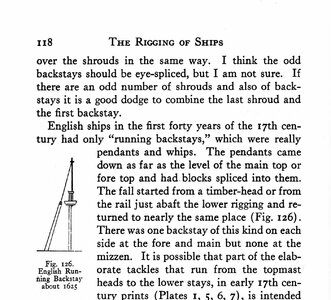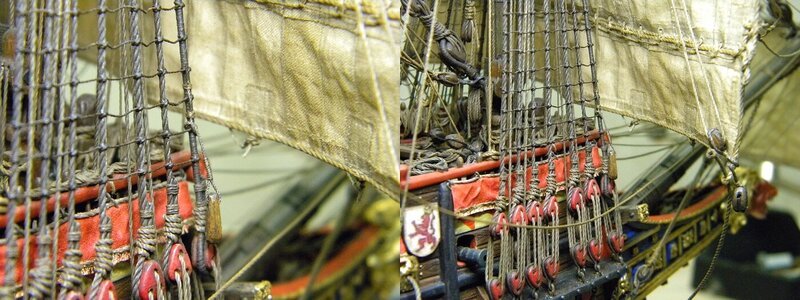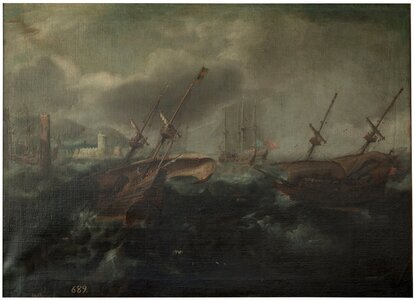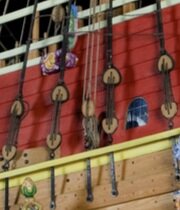I don't think we did it wrong...why?
first , there is not posible to turn main yard on such sharp angle that it will cross back stay on leeward side...
second, even if it will be the case, we allways could make good slack of this backstay and keep tight backstay on the windward side... when wind went from one of the side,but not straight from aft, only one of the backstays on the windward side works as a rule...
standing part of the backstay whip on my model secured to the ring bolt outside hull ,on the fenders, not on the shain plate - this is designed too short on the kit model and I had to find better location for standing part of the whip... running part of the whip secured on the small inner knight after passed trough sheeve in it, it could be fast pay out when necessary thus gives slack to the backstay when need it.
this knight placed opposite of the ring bolt where secured standing part of the whip.... this is my interpretation of simple form of backstay which consists of pendant and whip... both sides backstays have same arrangement on my model...
I try to reproduce this variant of english running backstay... don't ask me why it should be on spanish galleon :000!!! ))
))
first , there is not posible to turn main yard on such sharp angle that it will cross back stay on leeward side...
second, even if it will be the case, we allways could make good slack of this backstay and keep tight backstay on the windward side... when wind went from one of the side,but not straight from aft, only one of the backstays on the windward side works as a rule...
standing part of the backstay whip on my model secured to the ring bolt outside hull ,on the fenders, not on the shain plate - this is designed too short on the kit model and I had to find better location for standing part of the whip... running part of the whip secured on the small inner knight after passed trough sheeve in it, it could be fast pay out when necessary thus gives slack to the backstay when need it.
this knight placed opposite of the ring bolt where secured standing part of the whip.... this is my interpretation of simple form of backstay which consists of pendant and whip... both sides backstays have same arrangement on my model...
I try to reproduce this variant of english running backstay... don't ask me why it should be on spanish galleon :000!!!








